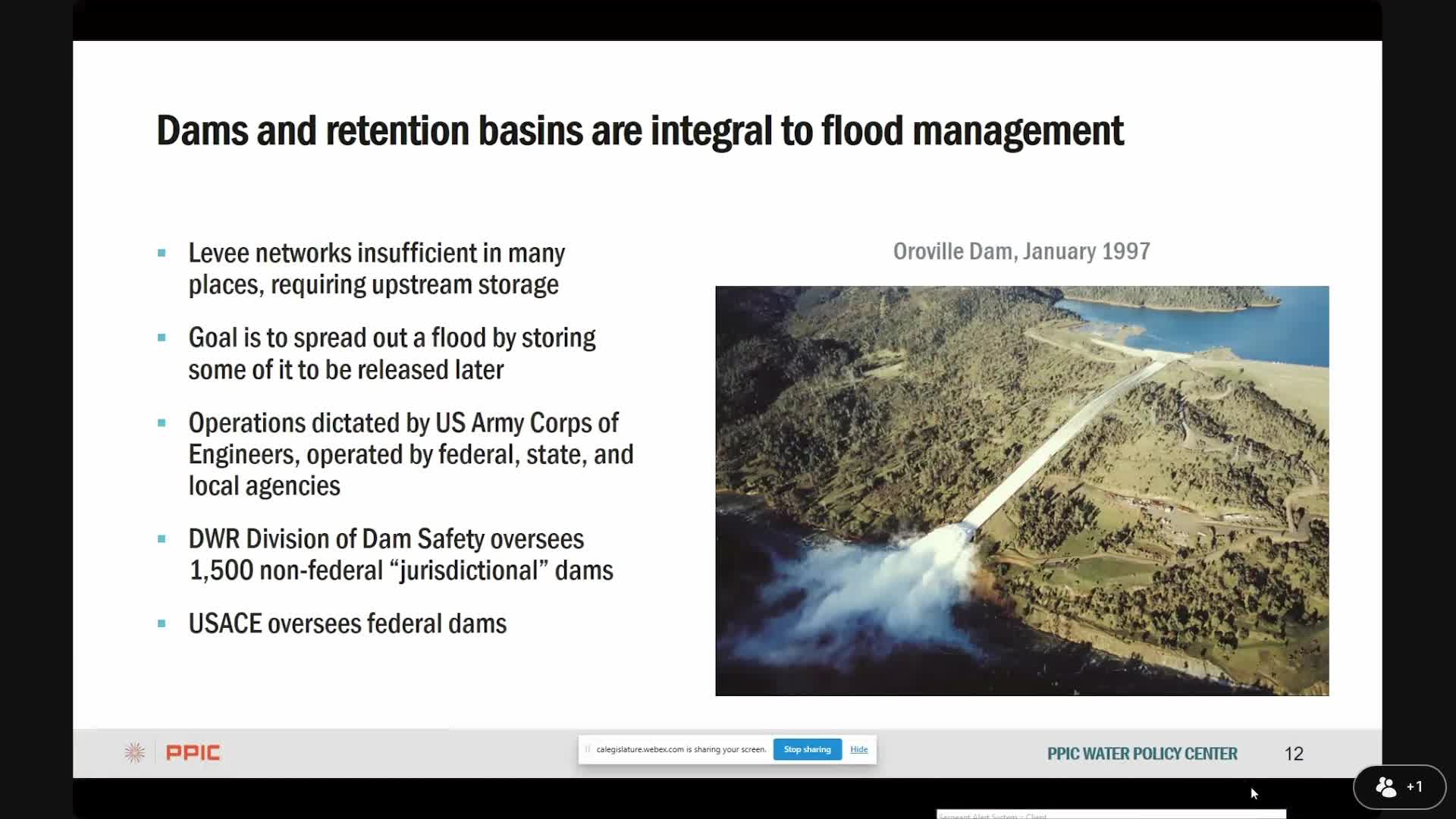PPIC advocates nonstructural flood risk management strategies amid Federal Insurance Program concerns
March 11, 2025 | California State Assembly, House, Legislative, California
This article was created by AI summarizing key points discussed. AI makes mistakes, so for full details and context, please refer to the video of the full meeting. Please report any errors so we can fix them. Report an error »

The Assembly Water, Parks, and Wildlife Committee meeting on March 11, 2025, spotlighted the urgent need for a shift in flood risk management strategies, emphasizing nonstructural approaches over traditional gray infrastructure. A representative from the Public Policy Institute of California (PPIC) stressed that these nonstructural methods are the most cost-effective way to manage flood risks.
The discussion highlighted the importance of state and local hazard mitigation plans, which primarily focus on meeting federal standards. These plans often utilize land use zoning to discourage new developments in federally designated special flood hazard areas. However, concerns were raised about the potential misapplication of these zoning laws.
A significant point of contention was the looming insolvency of the National Flood Insurance Program, which is expected to face severe financial challenges this year. The representative noted that Congress must intervene to address the program's sustainability, as some proposals suggest eliminating it altogether.
The meeting also acknowledged the commendable efforts of the Department of Water Resources (DWR) and the California Office of Emergency Services (Cal OES) in managing the recent flooding in the Tulare Basin, showcasing effective emergency response strategies.
As California grapples with increasing flood risks, the committee's discussions underscore the critical need for innovative and sustainable flood management solutions. The outcomes of these conversations could shape future policies and funding decisions aimed at protecting communities from flooding.
The discussion highlighted the importance of state and local hazard mitigation plans, which primarily focus on meeting federal standards. These plans often utilize land use zoning to discourage new developments in federally designated special flood hazard areas. However, concerns were raised about the potential misapplication of these zoning laws.
A significant point of contention was the looming insolvency of the National Flood Insurance Program, which is expected to face severe financial challenges this year. The representative noted that Congress must intervene to address the program's sustainability, as some proposals suggest eliminating it altogether.
The meeting also acknowledged the commendable efforts of the Department of Water Resources (DWR) and the California Office of Emergency Services (Cal OES) in managing the recent flooding in the Tulare Basin, showcasing effective emergency response strategies.
As California grapples with increasing flood risks, the committee's discussions underscore the critical need for innovative and sustainable flood management solutions. The outcomes of these conversations could shape future policies and funding decisions aimed at protecting communities from flooding.
View full meeting
This article is based on a recent meeting—watch the full video and explore the complete transcript for deeper insights into the discussion.
View full meeting
